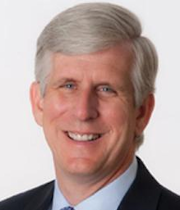
Graphic credit: Washington Times
To Obama Justice, only underdogs of history are worthy of equal protection
by James A. Bacon
The U.S. Justice Department is ever-vigilant against signs of “voter suppression” these days, most recently blocking – on the grounds that it would hurt blacks – a South Carolina law that would require voter identification. But the voting rights of some groups, it appears, are more worth protecting than others.
The territory of Guam, for instance, has called for a plebiscite on the territory’s relationship with the United States that could provide momentum for an independence movement. But the only people allowed to vote will be citizens who were native inhabitants in the year 1950 and their descendants. The provision limits the franchise to a group made up overwhelmingly of indigenous Chamorro people and excludes nearly all whites, Filipinos and other racial and ethnic groups who have moved to the island in the past six decades.
When presented with a complaint in 2009 by a white resident, retired Air ForceMaj. Arnold Davis, the Justice Department declined to intervene. In response late last year, the Center for Individual Rights (CIR) and former Justice Department Attorney J. Christian Adams filed suit in Guam federal district court to block enforcement of the voter restriction.
“The Obama administration shows hypersensitivity to race in South Carolina,” Terence J. Pell, president of the CIR, told me last week. But in Guam, where a racial agenda permeates the politics of the island and government action points to intentional race discrimination, he says, “the Obama administration can’t be bothered to look into it.”
I agree with Mr. Pell’s assessment, with one caveat. In Guam, the issue isn’t race – it’s ethnicity. Blacks living on Guam will lose their voting rights just as surely as whites, Asians and non-native Pacific Islanders. The common impulse behind Obama administration policy is its proclivity for favoring what it deems to be historically victimized minorities.
Guam was colonized by the Spanish in 1668 and then ceded to the United States in 1898 after the Spanish-American war. Organized as a U.S. territory in 1950, the island was granted increasing rights of self-governance in succeeding years. Guamanians are U.S. citizens, and their island of 155,000 residents sends a nonvoting representative to Congress. The United States lavishes the island with hundreds of millions of dollars in transfer payments, but collects no taxes in return.
But Chamorros were never given the right to vote on the constitutional measures affecting them, and some still feel like victims of colonial oppression. One obsession is the continuing demand for reparations to compensate for the depredations committed by the Japanese during World War II. Apparently, some Chamorros resent the Americans for permitting the island to be conquered – never mind that it was the Americans who subsequently liberated it.
Chamorros nurse other grievances. They worry about the erosion of their cultural identity as the U.S. continues expanding its military presence on the island and outsiders swamp the natives. Leaders felt snubbed not long ago when a major congressional delegation stopped on Guam to refuel on the way to Asia without doing the courtesy of meeting with them, and again when President Obama did the same.
To borrow the anti-colonial rhetoric of the left, native Guamanians were despoiled by an imperialist United States and were powerless to stop their country from being overrun by outsiders who now outnumber them. Chamorros make up only 37 percent of the island’s population today. They are a minority, and they are victims. Therefore, the Obama Justice Department reflexively sides with them.
In 2000, the U.S. Supreme Court struck down a measure that allowed only native Hawaiians to vote when electing trustees to the Office of Hawaiian Affairs. Reasoned the court: “Distinctions between citizens solely because of their ancestry are by their very nature odious to a free people whose institutions are founded upon the doctrine of equality.”
The Guamanian measure seeks to circumvent that ruling by making the voting restriction based on residency, not race or ethnicity. However, the measure clearly imposes what liberal legal theorists might term a “disparate impact.”
The Associated Press cites numbers showing that 30 percent of South Carolina’s registered voters are nonwhite, while 34 percent of voters lacking state-issued photo IDs are nonwhite. The Justice Department deemed that 4 percentage point difference jarring enough to warrant overturning the law.
The “disparate impact” of the Guamanian law would be immeasurably greater. Chamarros may make up 37 percent of the island’s population, but it is likely they would account for 95 percent or more of the electorate voting on the plebiscite.
Clearly, the Obama Justice Department applies the principle of proportionality only when it suits it. At some point, the rest of us have to say, “We’re sorry about what happened in the past, but get over it. We’re all American citizens now. We all have equal rights. End of story.”
This column is republished with a minor editing change from the Washington Times.










 By Peter Galuszka
By Peter Galuszka







